Gunung
Mulu National Park, (52,864 Ha) in Sarawak encompasses incredible caves
(Lang Cave, Deer Cave, Clearwater cave, Sarawak Chamber and etc) and
karst formations in a mountainous equatorial rainforest setting. Mulu
continues to retain this sense of adventure associated with its’
original exploration through the provision of adventure caving and other
adventure activities(Climbing Pinnacles, Hike Gunung Mulu, Night Jungle
wall and etc).
Mulu has an exceptional level of biological diversity with over 3,500
species of plants recorded in the park. These include a variety of highly
specialized orchids, pitcher plants, palms, gingers and a most unusual
‘One Leaf’ plant to be found at the entrance of certain
caves.
There is also a large diversity of fauna species that include deer,
monkeys, giant porcupine, civets and all of Borneo’s hornbills,
but many visitors to the park are surprised at the limited sightings.
This is largely due to the nature of the animals and the habitat in
which they are found. Many animal species are shy or nocturnal, have
excellent camouflage abilities or live high in the rainforest canopy.
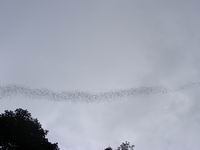 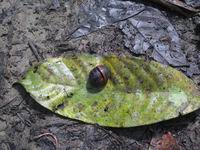
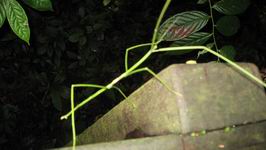
The source of Mulu’s great biological diversity lies in the changes
in topography from just 50 metres above sea level near park headquarters
to the peaks of Gunung Mulu at 2,377 metre and Gunung Api at 1,682 metres.
The geology, which consists of a combination of alluvial clays, sandstone
and limestone formations, further adds to the variety and specialization
of the park’s biology.
As with much of Borneo, the rivers at Mulu form the primary means of
transport. The park’s steep landscape means most of the access
is restricted to the rivers flowing on the park’s boundaries in
the lowland areas. Even by equatorial standards, Mulu has a high annual
rainfall with an average of five to six metres. Fortunately weather
patterns in the park are reasonably consistent with mostly clear mornings
and showers in the late afternoon or evening.
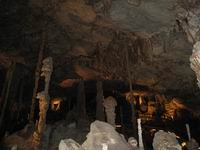 
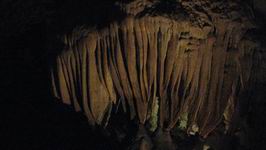
Show Caves
These caves have been illuminated to focus on certain features within
its dim interior. Special paths enable visitors to move around easily
and also protect the delicate geological structures from getting damage
accidentally. It is accessible from the Park Headquarters, which requires
a 3 km walk through the jungle on specially constructed plank walk.
Lang's Cave
Named after the man who first introduced speleologists to the cave in
1978, it features a variety of intricately sculptured stalactites and
stalagmites, delicate and transparent helicoids and spectacular rock
curtains. Footprints embedded in the rocks at the entrance of the cave
indicate that it was once inhabited by wild boars.
Deer Cave
As its name suggests, this cave was a shelter for deer. It also served
as a human burial ground. However, it has now been taken over by millions
of bats that are seen flying out in formation in search of food when
night time approaches. Other inhabitants include swiftlets circling
the entrance, earwigs, centipedes and cicadas. Its 160-metre wide mouth
resembles a colossal stone jaw, making it popular as the largest cave
entrance. Another unique feature is the Adam & Eve's shower, a cascade
of water falling 120 metres from the cave roof.
Wind Cave
Using the Melinau River, a refreshing breeze greets you as you approach
the cave which explains the origin of its name. It contains magnificent
stalactites and stalagmites in all shapes and sizes. But the exciting
bit about the cave is that it is said to be haunted!
Clearwater Cave
Measuring over 100 km, this cave is acknowledged as the longest cave
in Southeast Asia and the 7th longest in the world. Venture inside into
Lady's Cave with the stalactite resembling the Virgin Mary. Walk 50
steps down to the underground rivers and observe labyrinth caverns and
passages that were formed millions of years ago. The crystal clear water
is said to possess mysterious powers that restore youth!
Adventure Caving
For something more challenging, don protective helmets and miners' lamps
and follow a trail down into the depths of Clearwater and Wind caves,
under Gunung Api. Crawl with the centipedes and earwigs and be prepared
to come face to face with other inhabitants in the cave floor.
Treks and Trails
Mulu has three adventure treks, all of which require a certain level
of physical fitness. Basic camping gear is useful as overnight stays
in jungle base camps are required. Trekkers must be accompanied by offical
park guides
 

The Pinnacles of Gunung Api
Take up the challenge to view the pinnacles, located in a shallow valley
1,200 metres above sea level. The adventure begins with an exciting
2-hour boat trip over rapids. On days when the water level gets low,
be prepared to shove the boats over the rock-strewn rapids. A 3-4 hour
trek through virgin forests brings you to a park hut on the bank of
the Melinau river where you can rest for the night. The next morning,
begin with a 4-hour climb and reach the viewing point that overlooks
the pinnacles. The smooth razor-edged pinnacles measure 20 metres wide
at the base and 45 metres in height. Separated by deep fissures and
low bushy mountain forest, they present a spectacular sight when viewed
from above.
 

On The Trail of Headhunters
The trail once taken by the legendary warriors on their head-hunting
spree goes through the lowland forests and down the mighty flowing rivers.
This is recommended for those with an unquenchable thirst for adventure
and excitement. Follow the head-hunters trail and live out your fantasies
in the rugged terrain of Sarawak wilderness.
 

Gunung Mulu Summit Trek
The climb to the summit of Gunung Mulu (2,376 m) is the toughest organised
trek in the park. It requires a high level of fitness and a sense of
adventure. Indeed, Gunung Mulu has always attracted adventurers. In
the 19th Century, Spenser St John and Charles Hose, two old 'Borneo
hands', attempted to conquer Mount Mulu. They and other explorers and
mountaineers failed. It wasn't until the 1920's, when a Berawan rhino
hunter named Tama Nilong discovered the 'south-west' ridge, that a way
to the summit was found. In 1932, Tama Nilong led Lord Shackleton and
an Oxford University Expedition to the summit of Mulu.
Today's trek follows the route discovered in the 1920's. It involves
overnight stops at jungle camps and offers a chance to experience the
rainforest and perhaps see some rare animals and birds, including various
species of Hornbill. The trek is usually done as a 4-day hike, but experienced
trekkers can do it in less. A number of wooden huts are positioned along
the trail and provide shelter for overnight stops.
|











